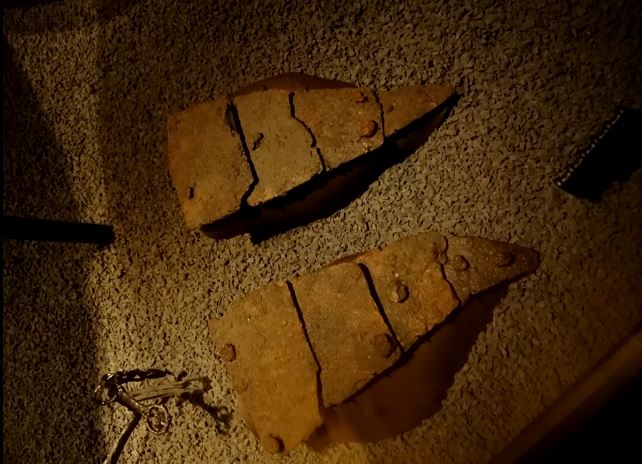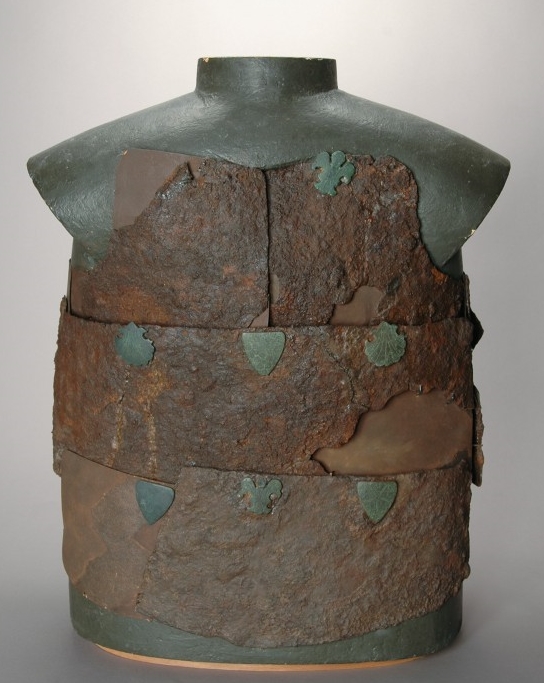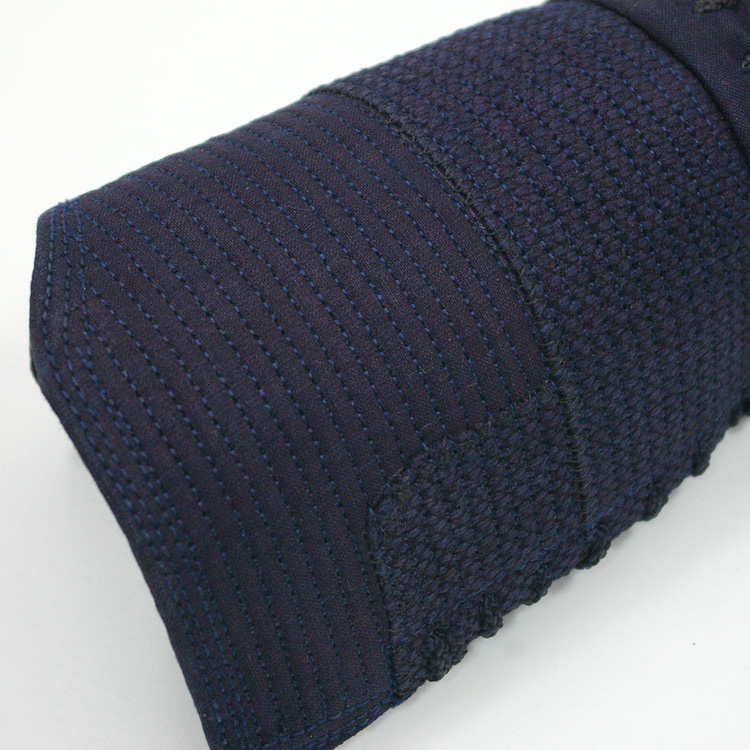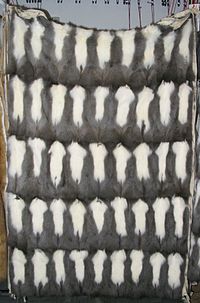| Author |
Message |
Dan Howard

|
 Posted: Fri 12 Jun, 2015 3:10 pm Post subject: Posted: Fri 12 Jun, 2015 3:10 pm Post subject: |
 |
|
Guilds guarded their territory very very jeaously. Even a qualified armourer could not make armour unless he was a member of the appropriate guild. Guilds even had the power to come onto private property and confiscate any armour that didn't meet their standards. I can't see how any old woman unrelated to the armour industry would be permitted to make armour. As soon as the local guild found out, that armour would be siezed and the woman fined (or worse).
Author: Bronze Age Military Equipment, Pen and Sword Books
|
|
  |
 |
|
Mart Shearer
|
 Posted: Fri 12 Jun, 2015 5:12 pm Post subject: Posted: Fri 12 Jun, 2015 5:12 pm Post subject: |
 |
|
True in major cities, less so in small towns or rural areas.
ferrum ferro acuitur et homo exacuit faciem amici sui
|
|
  |
 |
Benjamin H. Abbott

|
 Posted: Fri 12 Jun, 2015 9:44 pm Post subject: Posted: Fri 12 Jun, 2015 9:44 pm Post subject: |
 |
|
| Dan Howard wrote: | | I'm not sure whether that will help. Cotton defenses usually only cover the torso and arms. Plate harness covers the entire body. Almost half of the weight of a harness is in the legs. This is the distinction that Michiel was making as well. None of the people he was talking about covered themselves in armour - especially the legs - because they preferred to remain nimble in battle. All of the armours he described only covered the upper body. The breastplate provided the least coverage of all and was only worn by those who could afford nothing better. Which tells us that textile armour was not cheap. Poor people wore munitions plate, not jacks. |
I'd have to find the Spanish source to say for sure, but as I recall it wasn't comparing full plate harnesses to cotton armor but rather plate armor that cover a similar amount of the body as infantry typically wore. Also, in the Americas cotton armor (and in places leather armor) saw the most widespread use and thus was most likely cheaper than plate or mail.
Ian Heath claims the following: "Garciasco de la Vega states that the escaupilla 'turned arrows better than inferior plate', while the Codex Rios (Codex Vaticanus A) records how 'it resists the arrows that could penetrate the strongest coats of mail and even some [plate] corselets [but] could not penetrate these escaupillas.'" I'll have to try to track down these quotations in the original language. I'd forgotten about them. Upon seeing them again I'm skeptical.
|
|
  |
 |
Dan Howard

|
 Posted: Sat 13 Jun, 2015 1:14 am Post subject: Posted: Sat 13 Jun, 2015 1:14 am Post subject: |
 |
|
| Benjamin H. Abbott wrote: | | Ian Heath claims the following: "Garciasco de la Vega states that the escaupilla 'turned arrows better than inferior plate',. |
I'm guessing that this is the section he is talking about.
ue así que, en una de las primeras refriegas que los españoles tuvieron con los indios de Apalache, sacó el maese de campo Luis de Moscoso un flechazo en el costado derecho que le pasó una cuera de ante y otra de malla que llevaba debajo, que, por ser tan pulida,había costado en España ciento y cincuenta ducados, y de éstas habían llevado muchas los hombres ricos por muy estimadas. También le pasó la flecha un jubón estofado y lo hirió de manera que, por ser a soslayo, no lo mató. Los españoles, admirados de un golpe de flecha tan extraño, quisieron ver para cuánto eran sus cotas, las muy pulidas en quien tanta confianza tenían. Llegados que, si de la otra parte topara un hombre, también lo pasara.
Los españoles, viendo la poca o ninguna defensa que una cota hacía contra una flecha, quisieronver lo que hacían dos cotas, y así mandaron vestir otra muy preciada sobre lambre para pasarlas ambas.El indio, volviendo a sacudir los brazos como que les pedía nuevas fuerzas, pues le doblaban las defensas contrarias, desembrazó la flecha y dio en las cotassalió de las cotas como la primera."afrenta de sus cotas, y de allí adelante quedaron bien desengañados de lo poco defensiva; y las cotas deadelante en los lugares donde acaecieron que cierto son para admirar.Mas al fin, considerando que estos indios son engendrados y nacidos sobre arcosy flechas, criados y alimentados de lo que con ellas matan y tan ejercitados enellas, no hay por qué maravillarnos tanto.
My Spanish is pretty poor but I can't see any mention of plate at all - inferior or otherwise
Author: Bronze Age Military Equipment, Pen and Sword Books
|
|
  |
 |
|
Mart Shearer
|
 Posted: Sat 13 Jun, 2015 8:43 am Post subject: Posted: Sat 13 Jun, 2015 8:43 am Post subject: |
 |
|
That passage is from La Florida describing the expedition of Hernando de Soto and Luis Moscoso's shooting and subsequent testing of mail. The earlier passage being referenced might be from the Inca's Comentarios Reales de los Incas or more likely from Bernal Diaz's Historia verdadera de la conquista de la Nueva España.
ferrum ferro acuitur et homo exacuit faciem amici sui
|
|
  |
 |
Benjamin H. Abbott

|
 Posted: Sat 13 Jun, 2015 10:55 am Post subject: Posted: Sat 13 Jun, 2015 10:55 am Post subject: |
 |
|
Unless Heath grossly misinterpreted the above passage, he means something different from de la Vega. As I recall, however, he doesn't provide the page number or even work in question. I don't remember anything about cotton armor from de la Vega but I haven't read all of his work.
As far as lightness goes, there is this from Dominic Mancini from 1483, describing English archers:
| Quote: | | There are hardly any without a helmet, and none without bow and arrows; their bows and arrows are thicker and longer than those used by other nations, just as their bodies are stronger than other peoples’, for they seem to have hands and arms of iron. The range of their bows is no less than that of out arbalests (crossbows); there hangs by the side of each a sword no less long than ours, but heavy and thick as well. The sword is always accompanied by an iron shield… They do not wear any metal armour on their breast nor any other part of their body, except for the better sort who have breastplates and suits of armor. Indeed, the common soldiery have more comfortable tunics that reach down below the loins and are stuffed with tow or some other material. They say that the softer the tunic the better do they withstand the blows of arrows and swords, and besides that in summer they are lighter and in the winter they are more serviceable than iron. |
The last sentence seems to be saying that fabric armor is lighter than iron (at least in the summer?) but it's not clear. Does anybody have the original language for this one? The passage also indicates that fabric armor was more widespread and thus possibly cheaper than metal armor.
|
|
  |
 |
|
Mikael Ranelius
|
 Posted: Sat 13 Jun, 2015 1:00 pm Post subject: Posted: Sat 13 Jun, 2015 1:00 pm Post subject: |
 |
|
| Mart Shearer wrote: | | True in major cities, less so in small towns or rural areas. |
True. Also, the guild system was never fully adopted in some parts of Europe. There must have been a great variety of soft armour from silk-covered and well-tailored gambesons assembled by expert craftsmen to coarser ones sewn by local seamstresses and tailors.
|
|
  |
 |
Dan Howard

|
 Posted: Sat 13 Jun, 2015 3:17 pm Post subject: Posted: Sat 13 Jun, 2015 3:17 pm Post subject: |
 |
|
| Mikael Ranelius wrote: | | There must have been a great variety of soft armour from silk-covered and well-tailored gambesons assembled by expert craftsmen to coarser ones sewn by local seamstresses and tailors. |
No there must not; not until someone produces evidence that it actually occurred. Mart's passage about The Wowing of Jok and Jynny is a point in favour of this argument but we need a lot more evidence than this. Jumping to unfounded conclusions does not help. We know that there was a great variety in the material used in the making of textile armours, and this affected the price of the armour, but we do not know if anyone apart from properly qualified armourers made them. You can't just turn up to muster with any old armour you wanted. There were inspections and minimum standard requirements. The armour can be made from cheap cloth but it still had to be properly put together according to the legislated specifications. If you showed up with a half-arsed jack that your mom sewed together from scraps, you will be fined and sent home.
Author: Bronze Age Military Equipment, Pen and Sword Books
|
|
  |
 |
Dan Howard

|
 Posted: Sat 13 Jun, 2015 3:44 pm Post subject: Posted: Sat 13 Jun, 2015 3:44 pm Post subject: |
 |
|
| Benjamin H. Abbott wrote: | | The last sentence seems to be saying that fabric armor is lighter than iron (at least in the summer?) but it's not clear. Does anybody have the original language for this one? The passage also indicates that fabric armor was more widespread and thus possibly cheaper than metal armor. |
Original language would be needed to confirm translation accuracy.
Author: Bronze Age Military Equipment, Pen and Sword Books
|
|
  |
 |
|
Matthew Velardo
|
 Posted: Sat 13 Jun, 2015 7:59 pm Post subject: Posted: Sat 13 Jun, 2015 7:59 pm Post subject: |
 |
|
| Dan Howard wrote: | | Mikael Ranelius wrote: | | There must have been a great variety of soft armour from silk-covered and well-tailored gambesons assembled by expert craftsmen to coarser ones sewn by local seamstresses and tailors. |
No there must not; not until someone produces evidence that it actually occurred. Mart's passage about The Wowing of Jok and Jynny is a point in favour of this argument but we need a lot more evidence than this. Jumping to unfounded conclusions does not help. We know that there was a great variety in the material used in the making of textile armours, and this affected the price of the armour, but we do not know if anyone apart from properly qualified armourers made them. You can't just turn up to muster with any old armour you wanted. There were inspections and minimum standard requirements. The armour can be made from cheap cloth but it still had to be properly put together according to the legislated specifications. If you showed up with a half-arsed jack that your mom sewed together from scraps, you will be fined and sent home. |
True, true, we can never say anything for certain until we find several written references, and at best, surviving examples. Then again, there is always a level of speculation.
Much of the poor quality or crude armor that may have been used in historical times was probably reused and recycled into other products. Even high quality pieces belonging to important nobles, especially from the early medieval times are very rare. As we know from the Battle of Visby, there were certainly some finely made and well known styles of armor, while others look antiquated or even crude. I think it would be safe to assume that there was a bit more variety than commonly thought... but of course any speculation would still be merely speculation.

 Attachment: 68.04 KB Attachment: 68.04 KB

 Attachment: 228.4 KB Attachment: 228.4 KB

|
|
  |
 |
|
Mikael Ranelius
|
 Posted: Sun 14 Jun, 2015 9:21 am Post subject: Posted: Sun 14 Jun, 2015 9:21 am Post subject: |
 |
|
| Dan Howard wrote: |
No there must not; not until someone produces evidence that it actually occurred. Mart's passage about The Wowing of Jok and Jynny is a point in favour of this argument but we need a lot more evidence than this. Jumping to unfounded conclusions does not help. We know that there was a great variety in the material used in the making of textile armours, and this affected the price of the armour, but we do not know if anyone apart from properly qualified armourers made them. You can't just turn up to muster with any old armour you wanted. There were inspections and minimum standard requirements. The armour can be made from cheap cloth but it still had to be properly put together according to the legislated specifications. If you showed up with a half-arsed jack that your mom sewed together from scraps, you will be fined and sent home. |
I completely agree that all conclusions in this matter must be supported by reliable sources. Unfortunately though our understanding of how medieval armies were supplied is far from complete due to lack of sources, hence my surmise that people other than professional armourers would have been involved in soft armour-production.
We must also be cautious not to generalize and assume that what was true for developed urban regions in e.g. Italy or France was also true for more remote and less-developed areas. For instance, is it likely that all Scottish levymen at Bannockburn and Dupplin Moor wore professionally made quilted armour, and if so where were they made and how was the demand satisfied without industrial-rate production?
|
|
  |
 |
|
Matthew Amt
|
 Posted: Sun 14 Jun, 2015 9:27 am Post subject: Posted: Sun 14 Jun, 2015 9:27 am Post subject: |
 |
|
| Matthew Velardo wrote: | | Then again, there is always a level of speculation. |
So it makes sense to speculate as little as possible, eh?
| Quote: | | Much of the poor quality or crude armor that may have been used in historical times was probably reused and recycled into other products. |
Careful, that's speculation. I once knew a Celtic group that used a concept like this as their basic premise: "Only the really good stuff survives, so all our stuff the crappy low-end stuff." Almost nothing they had resembled an actual find, and the workmanship overall was extremely poor and lazy. They looked like street people in plaid. It was painful.
Matthew
|
|
   |
 |
|
Matthew Velardo
|
 Posted: Sun 14 Jun, 2015 11:26 am Post subject: Posted: Sun 14 Jun, 2015 11:26 am Post subject: |
 |
|
| Matthew Amt wrote: | | Matthew Velardo wrote: | | Then again, there is always a level of speculation. |
So it makes sense to speculate as little as possible, eh?
| Quote: | | Much of the poor quality or crude armor that may have been used in historical times was probably reused and recycled into other products. |
Careful, that's speculation. I once knew a Celtic group that used a concept like this as their basic premise: "Only the really good stuff survives, so all our stuff the crappy low-end stuff." Almost nothing they had resembled an actual find, and the workmanship overall was extremely poor and lazy. They looked like street people in plaid. It was painful. |
Oh, I completely agree! What I meant was that we shouldn't be too quick to rule out the possibilities of a particular garment or armor style. Certainly any hypotheses we create must be backed with some sort of physical, literary, and or economical evidence... with a touch of common sense! 
Of course, too much speculation and personal stylization, and we'll end up with this!

|
|
  |
 |
|
Mike Janis
Location: Atlanta GA Joined: 26 Feb 2007
Posts: 30
|
 Posted: Tue 16 Jun, 2015 9:43 am Post subject: Posted: Tue 16 Jun, 2015 9:43 am Post subject: |
 |
|
Regarding dying linen and how well it takes dye. Spill some red wine on your wife’s linen table cloth (actually don’t try this at home). You can’t unring that bell and you can’t get the red out.
MikeJ
|
|
  |
 |
Dan Howard

|
 Posted: Sun 21 Jun, 2015 4:35 pm Post subject: Posted: Sun 21 Jun, 2015 4:35 pm Post subject: |
 |
|
| Mike Janis wrote: | | Regarding dying linen and how well it takes dye. Spill some red wine on your wife’s linen table cloth (actually don’t try this at home). You can’t unring that bell and you can’t get the red out. |
You can't leave the doghouse ever again either 
Author: Bronze Age Military Equipment, Pen and Sword Books
|
|
  |
 |
Dan Howard

|
 Posted: Fri 26 Jun, 2015 2:34 am Post subject: Posted: Fri 26 Jun, 2015 2:34 am Post subject: |
 |
|
Here is an example of the type of quilting required to make textile armour. It is an arm guard from modern kendo armour.

Author: Bronze Age Military Equipment, Pen and Sword Books
|
|
  |
 |
Dan Howard

|
 Posted: Sat 23 Feb, 2019 12:03 am Post subject: Posted: Sat 23 Feb, 2019 12:03 am Post subject: |
 |
|
| Matthew Amt wrote: | | Matthew Velardo wrote: | | I have one very (silly) noob question though... which I'm sure has been answered many times before.... Is it possible that these geometric patterns on this figure in the Bayeux Tapestry represent some sort of quilted protection, or is this maille? |
Not a silly question at all! It has been *debated* many times, but I don't think it has ever been *answered*.
That's Bishop Odo, and we don't know what the heck he's wearing. I think we all agree that it is not mail, since it is very consistently distinctive from all the other depictions of mail on the Tapestry. My opinion on it changes almost every time I look at it! At the moment, since it is always shown in shades of brown, while mail and horses all get to be red and yellow and green and blue, I suspect that it is supposed to show something which was brown in actuality. Leather springs to mind, with the caveat that leather can be dyed, of course. Scale armor made from hooves or horn or rawhide? |
Just found this. Apologies for resurrecting an old thread. The artist is most likely attempting to depict a civilian garment called "vair", which is made from multiple squirrel skins
 . .
Author: Bronze Age Military Equipment, Pen and Sword Books
|
|
  |
 |
|
William P
|
 Posted: Thu 06 Jun, 2019 2:49 am Post subject: Posted: Thu 06 Jun, 2019 2:49 am Post subject: |
 |
|
|
my gut reaction to the odo imagery was that it reminded me of the epilorikion worn in the byzantine empire over the metal armour.. though of course thats a stretch and a half. considering the distance and this predates the normans extensive contact with the empire
|
|
   |
 |
|
Len Parker
|
|
  |
 |
|
Len Parker
|
 Posted: Wed 20 Dec, 2023 10:49 am Post subject: Posted: Wed 20 Dec, 2023 10:49 am Post subject: |
 |
|
|
Could Odo be wearing a treyja? Here’s an example From Hakonar Saga Hakonsonar: “hann hafði góða brynju ok styrkja treyju” [“he had on good armour and a strong shirt”].
|
|
  |
 |
|
|
You cannot post new topics in this forum
You cannot reply to topics in this forum
You cannot edit your posts in this forum
You cannot delete your posts in this forum
You cannot vote in polls in this forum
You cannot attach files in this forum
You can download files in this forum
|
All contents © Copyright 2003-2025 myArmoury.com — All rights reserved
Discussion forums powered by phpBB © The phpBB Group
Switch to the Basic Low-bandwidth Version of the forum
|

